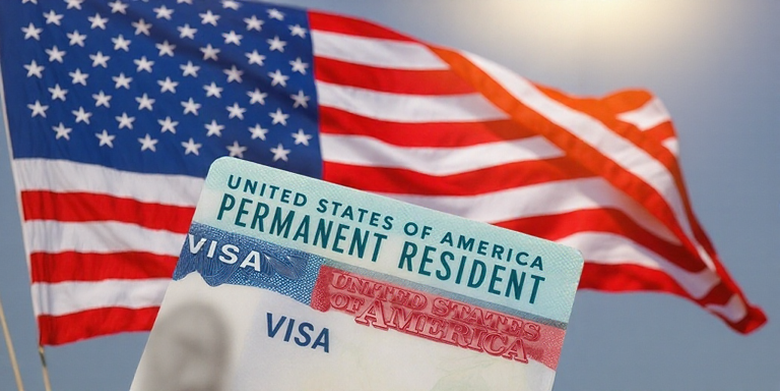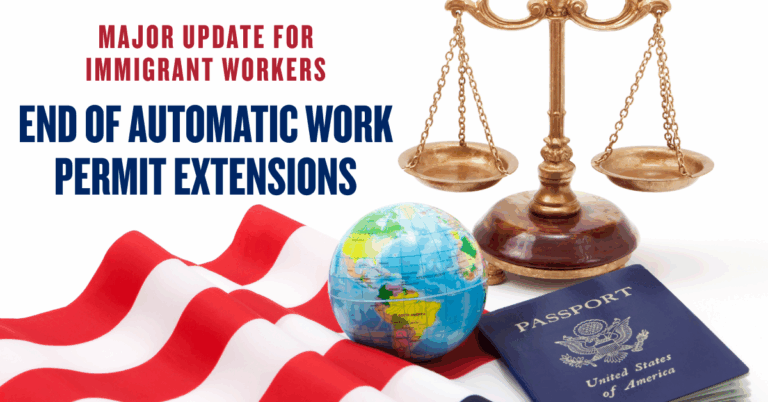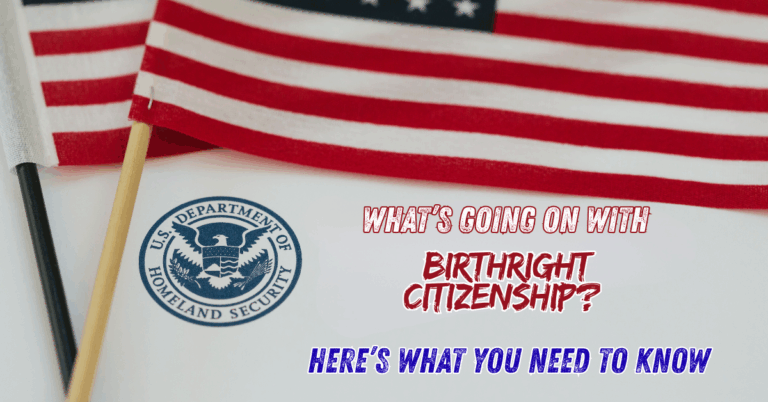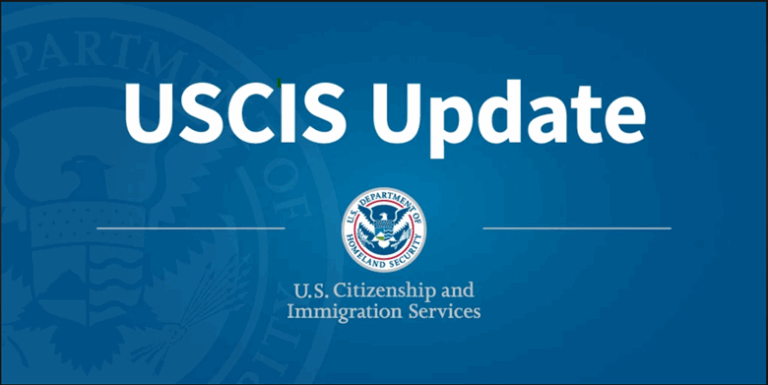A. Overhaul of Naturalization Test and Citizenship Requirements
New Civics Test Implemented: USCIS announced the implementation of a redesigned 2025 naturalization civics test, aiming to better assess applicants’ knowledge of U.S. history and government. [1]A Federal Register notice was published detailing the updated test format and content, as part of a multi-step overhaul of American citizenship standards. Officials emphasized that American citizenship should be reserved for those who fully embrace U.S. values and meet all statutory requirements, including the ability to read, write, and speak English and understand U.S. civics.[2]
Stricter Eligibility and Vetting: Alongside the new test, USCIS has tightened naturalization eligibility reviews. The agency restored more robust vetting of applicants and stricter scrutiny of requests for exemption from English/civics requirements (e.g. disability waivers). Field officers received guidance to more rigorously evaluate an applicant’s “good moral character,” looking for affirmative contributions to society rather than merely an absence of wrongdoing. USCIS also resumed practices like neighborhood investigations to verify that applicants meet all requirements and are “worthy of U.S. citizenship”. New policy clarifications make clear that unlawful voting, illegal voter registration, or false claims to citizenship will bar an applicant from establishing the required good moral character.[3]
Leadership Messaging: The changes are part of an ongoing effort to restore integrity to the naturalization process. USCIS indicated more initiatives will be rolled out in coming weeks to strengthen citizenship standards. In a Constitution Day message on September 17[4], President Trump congratulated new U.S. citizens taking the Oath of Allegiance and urged them to “safeguard, honor, and respect” the Constitution and American law, reflecting the administration’s emphasis on full civic assimilation by naturalized citizens.
What does this mean for applicants:
For anyone considering naturalization, the landscape is shifting toward higher standards and closer scrutiny. The new civics test, stricter vetting, and emphasis on civic responsibility mean applicants should prepare more thoroughly and ensure their record reflects both compliance and contribution. Staying informed about these updates—and preparing with professional guidance when needed—will be key to a smoother path to citizenship.
B. Expansion of USCIS Enforcement Authority
New DHS Rule Empowering USCIS Agents: In a significant policy shift, the Department of Homeland Security issued a final rule on Sept. 4, 2025, expanding the law enforcement powers of USCIS. Under this rule, certain USCIS officers (designated as 1811-series special agents) are now authorized to investigate immigration-law violations, make arrests, carry firearms, and execute search and arrest warrants. These authorities, which are standard for federal law enforcement agents, were delegated by DHS Secretary Kristi Noem to enable USCIS to more fully carry out its fraud detection, national security, and public safety missions in the immigration system.[5]
Rationale and Impact: USCIS leadership framed this expansion as a “historic moment” that will bolster homeland security. USCIS Director Joseph Edlow noted that the agency “has always been an enforcement agency” and that the new powers will help address immigration fraud and other crimes more directly. Previously, many suspected fraud cases uncovered by USCIS during application adjudications had to be referred to ICE for investigation. Now, USCIS can handle investigations from start to finish, which is expected to improve efficiency and allow ICE’s Homeland Security Investigations (HSI) to focus on transnational crime and removal of criminals The USCIS Director is also expressly authorized to order expedited removal of certain ineligible noncitizens as part of these new authorities [6]
Implementation: USCIS plans to recruit and train a cadre of these special agents in the coming months. The final rule will take effect 30 days after publication (early October 2025). This change means immigration attorneys and applicants may start encountering USCIS officers acting in a law enforcement capacity during fraud investigations or site visits, a role traditionally associated only with ICE.[7]
What This Means in Practice
- For applicants: Be prepared for increased scrutiny during interviews, site visits, or follow-ups. USCIS now has more direct tools to investigate suspected fraud, so all information and documentation submitted should be complete and accurate.
- For employers and petitioners: Companies sponsoring visas should ensure strict compliance with immigration and employment laws, as USCIS officers may directly investigate suspected violations at the petitioning organization’s worksites.
C. Temporary Protected Status (TPS) Update
TPS Terminations for Several Countries: There have been major developments in TPS designations in light of court decisions and DHS review:
- Nepal, Honduras, and Nicaragua: On Aug. 20, 2025, the Ninth Circuit lifted a prior injunction, allowing DHS to proceed with terminating TPS for Nepal, Honduras, and Nicaragua[8]. As a result, TPS for Nepal formally ended on Aug. 20, 2025, and any related Employment Authorization Documents (EADs) for Nepali TPS holders are no longer valid past that date. TPS for Honduras and Nicaragua ended on Sept. 8, 2025 (11:59 p.m.); their TPS-based EADs similarly expired after Sept. 8. USCIS has referred stakeholders to its archived TPS country-specific web pages for further details. Affected individuals from these countries revert to whatever other immigration status they may hold (if any), or else become undocumented as of the termination dates.
- Venezuela (2021 Designation): DHS also announced the termination of TPS for Venezuela’s 2021 designation. After reviewing country conditions, Secretary Noem determined that Venezuela no longer meets TPS statutory requirements. [9]TPS for Venezuela (designated in 2021) will terminate effective Nov. 7, 2025. Importantly, work permits (EADs) issued under TPS Venezuela have been automatically extended through Nov. 7, 2025 for those with certain expiration dates in 2022, 2024, or 2025. TPS beneficiaries who did not re-register under the last extension will not retain TPS to that date. USCIS advises that once TPS ends, if an individual has no other lawful immigration status, their SAVE record will show “No Status” (though some may have other applications or statuses that allow continued stay). Beneficiaries are urged to seek other immigration avenues or depart by the termination date. These TPS decisions were published in the Federal Register and further guidance is available on USCIS’s TPS webpage.
Note: The termination of TPS for these countries underscores the importance of keeping track of ongoing litigation and DHS announcements, as TPS status can be extended or ended depending on court orders and administration decisions. Individuals from affected countries should consult immigration counsel about alternative forms of relief or status in the U.S. now that TPS protections are ending
What This Means in Practice
For TPS holders: Track expiration dates closely and do not assume automatic extensions apply beyond the official termination date. If you hold TPS from Nepal, Honduras, Nicaragua, or Venezuela, you should consult an attorney as soon as possible about next steps—whether that’s adjustment of status, asylum, family-based petitions, or other forms of relief.
For employers: Verify the updated expiration of work authorization for employees who were relying on TPS-based EADs. Continuing to employ someone after their EAD has expired can expose employers to compliance risks.
D. Modernization of Fee Payments and Forms
Electronic Payments Mandated: USCIS introduced a major change to how filing fees are paid. Effective immediately (as of late August 2025), applicants have the option to pay USCIS filing fees via ACH direct debit from a U.S. bank account. A new form, Form G-1650 (Authorization for ACH Transactions), has been rolled out to enable secure direct debit payments for any application or petition. This initiative implements Executive Order 14247 on modernizing federal payments, aiming to reduce reliance on paper checks and money orders. According to USCIS, over 90% of fees were previously paid by check/money order, causing processing delays and risk of lost payments. The move to electronic payments is expected to increase efficiency and security[10].
Transition Timeline: USCIS is phasing out traditional payments on a tight schedule. The agency will continue to accept paper checks and money orders only until October 28, 2025. After Oct. 28, 2025, USCIS will no longer accept checks or money orders for most filings. Instead, applicants must pay either by ACH debit (Form G-1650) or by credit card (Form G-1450) going forward. Credit card payments by mail have been an option for some time (Form G-1450), and that remains available. USCIS has updated its Policy Manual to reflect that ACH direct debits are now an acceptable payment method. Applicants should ensure sufficient funds in their accounts, as a payment that is declined for insufficient funds will result in rejection of the filing. Those who do not have a U.S. bank account can continue to use credit cards (including prepaid cards) via Form G-1450.
Form Updates and Filing Changes: USCIS periodically updates form editions and filing addresses. Notably, as of Sept. 2, 2025, the filing location for Form I-539 (Application to Extend/Change Nonimmigrant Status) was changed for certain applicants. Residents of the Commonwealth of the Northern Mariana Islands (CNMI) who file Form I-539 must now send their applications to the USCIS facility in Montclair, CA, instead of the Texas Service Center. A 30-day grace period is in place; any I-539 from CNMI mailed to Texas postmarked on or after Oct. 2, 2025, will be rejected. This specific change affects primarily CNMI residents (including initial status applications under CNMI-only immigration provisions). It’s a reminder that practitioners should always check the latest “Where to File” instructions, as USCIS continues to realign workloads among its centers.[11]
What This Means in Practice
- For applicants: Double-check the accepted payment methods before filing. If you’ve always used checks or money orders, prepare to switch to ACH debit or credit card by the October deadline. Keep enough funds in your account to avoid a bounced payment, which will cause your application to be rejected outright.
- For those outside the U.S.: If you don’t have a U.S. bank account, consider prepaid credit cards or other card options to meet the new rules.
- For attorneys and representatives: Always confirm the latest “Where to File” guidance on the USCIS website before sending forms. The CNMI change is a good example of how quickly filing addresses can shift, and even a small mistake could result in rejection.
- For employers or organizations filing multiple cases: Moving to electronic payments can streamline bulk filings, but it also means tighter bookkeeping to ensure all transactions clear successfully.
E. Visa Program Updates:
a. H-2B Cap Reached
H-2B Temporary Workers (FY 2026 Cap): On September 16, 2025, USCIS announced that it has received enough petitions to meet the H-2B visa cap for the first half of Fiscal Year 2026. The congressionally mandated cap for H-2B (non-agricultural seasonal workers) is 33,000 visas per half-year. Sept. 12, 2025, was the final receipt date for new H-2B petitions requesting a start date before April 1, 2026. Any new cap-subject H-2B petitions filed after Sept. 12 with a work start date prior to April 1 will be rejected. Employers who didn’t file by that cutoff must now target a start date on or after April 1 (which counts against the second half FY2026 cap) or seek exemption from the cap (if eligible under limited return worker or other exemptions).[12]
USCIS encourages anyone with knowledge of H-2B program abuse or fraud to submit tips via the agency’s online tip form. This cap announcement is routine but important for businesses planning seasonal hiring – they now know the first-half allotment of H-2B visas is exhausted. The Department of Homeland Security, in consultation with the Department of Labor, may later decide whether to release any additional H-2B visas beyond the cap (as has been done in prior years), but no such supplemental increase has been announced for FY 2026 at this time
What This Means in Practice
Employers: Seasonal employers who missed the Sept. 12 filing cutoff for start dates before April 1, 2026, can no longer secure H-2B workers for that period. They will need to either plan for start dates after April 1 (second-half FY 2026 cap) or explore limited exemptions (such as returning-worker exemptions).
Workers: Prospective H-2B workers cannot be petitioned for first-half FY 2026 start dates anymore, unless exempt. Workers with offers should confirm whether their employer’s petition was filed before the deadline.
Attorneys/Advisors: Counsel employers to anticipate workforce shortages and consider staggered hiring or alternate visa categories. Monitor DHS announcements—supplemental visas could be released later, as has happened in prior years.
b. H-1B Updates
· H-1B Cap Season / Cap Reached (FY 2026)
USCIS has announced that it has now received enough petitions to satisfy the 65,000 regular cap + 20,000 U.S. master’s‐degree exemption cap for Fiscal Year 2026. This means new H-1B cap-subject petitions (those subject to the numerical limit) will be rejected / no longer accepted after the cap is met for that year. [13]
· Changes in Number of Registrations / Demand
There was a notable drop in total eligible registrations for the FY 2026 H-1B cap compared to FY 2025. USCIS data shows a significant reduction in eligible registrations. Also, fewer multiple registrations per beneficiary this year (meaning fewer duplicate registrations) compared to past years.
· Credit Card Transaction Limit Increased for Registration Fee
To accommodate volume and ease of payment, USCIS has increased the daily credit card transaction limit for H-1B registration / petition contexts from US$24,999.99 to US$99,999.99 for FY 2026. [14]
· Registration Requirement / Eligibility and Attestation
USCIS reminds that each registration submission requires the prospective petitioner to sign an attestation under penalty of perjury. Also, registrations must have valid passport or travel document info used in registration and must match that used in petition where applicable. [15]
· No New Changes to Premium Processing or Selection Process Announced Recently
In the past week or two, there were no new official announcements from USCIS about changing premium processing timelines or fees for H-1B (from the sources checked). The selection process remains random (with the “beneficiary-centric” approach) for cap subject registrations.
What This Means in Practice
Employers: The H-1B cap is closed for FY 2026. New filings won’t be accepted until the next fiscal year’s registration. Employers should review other visa categories (O-1, L-1, TN, etc.) or plan for FY 2027 registration.
Beneficiaries: Fewer registrations and duplicates may mean a “cleaner” lottery this year, but if you weren’t selected, you’ll need alternative visa strategies or fallback options like STEM OPT extensions (if eligible).
Practical Filing Tip: Payment capacity has increased (credit card limit raised to $99,999.99), which is especially useful for large employers or firms submitting multiple cases.
Compliance Reminder: Registrations must match the exact passport/travel document details used in the petition. Inaccuracies could result in denial
F. Visa Bonds & Nonimmigrant Visa (“Bond” Requirements, Visa‐Bond Pilot) Updates
As of August 20, 2025, the U.S. Department of State (DOS) began a pilot program in which nationals of certain countries are required to post a visa bond for B-1/B-2 nonimmigrant visas. [16]
Countries currently subject: Malawi and Zambia[17].
· Amounts and Terms of Bonds
The required bond amounts are $5,000, $10,000, or $15,000, depending on the applicant’s circumstances and assessed risk. The bond must be posted using Department of Homeland Security Form I-352, via the Treasury’s Pay.gov platform.
· Validity and Visa Duration under Bond Program
Visas under the pilot bond program are issued as single‐entry visas and are valid for 3 months from the date of issuance. Admission into the U.S. for such visa holders will be, in most cases, limited to 30 days for each visit.
· Conditions / Compliance and Refund of Bond
The bond amount is refundable if the visa holder complies fully with the terms: leaves by the authorized date, enters and departs via designated ports, etc. Failure to comply can result in forfeiture of the bond.
· Visa Interview and Application Location Changes
As of September 6, 2025, the Department of State updated the instructions for nonimmigrant visa applicants to schedule visa interviews in their country of nationality or residence. Applying in a third country is more restricted, and in many cases applicants must demonstrate residence in the country where they apply.
If their country of nationality does not have normal visa operations, the DOS has designated alternative consulates or embassies where applications should be made. [18]
· Visa Integrity Fee
There is also mention of a Visa Integrity Fee (e.g. $250) tied to nonimmigrant visa applications in conjunction with compliance monitoring. However, though it’s referenced in context of visa bond and pilot programs, official implementation details (refunds, which applicants, etc.) are less recently updated in the official sources checked.[19]
What This Means in Practice
Applicants (Malawi & Zambia nationals): You may be required to post a $5k–$15k bond for a B-1/B-2 visa. The bond is refundable only if all entry/exit and compliance rules are followed. Visa validity will be limited (3 months, single entry, usually 30-day stay).
Employers/Hosts: Be aware that business visitors from Malawi or Zambia may face stricter entry hurdles and costs. This could affect planning for short-term assignments or meetings in the U.S.
Attorneys: Prepare clients for the bond process via DHS Form I-352 on Pay.gov and advise them about designated ports of entry, where compliance is strictly monitored.
All Applicants: Visa interview applications must generally be scheduled in the applicant’s country of nationality/residence. Applying in a third country is much more limited now, which could affect those seeking faster processing elsewhere.
G. Immigration Enforcement Actions and Raid
Mass Worksite Raid in Georgia: In one of the largest immigration enforcement actions in recent years, ICE Homeland Security Investigations (HSI) agents led a multi-agency raid on a manufacturing worksite in Savannah, Georgia on September 4, 2025. The operation was executed via a federal search warrant as part of an ongoing criminal investigation into unlawful employment practices at a large factory. As a result of the raid, 475 individuals were detained on immigration violations – many of whom were allegedly working illegally by misusing tourist visas (B-1/B-2 visitor visas prohibit employment). The enforcement action involved coordination among numerous agencies, including ICE’s Enforcement and Removal Operations, the Department of Labor OIG, FBI, DEA, CBP (Office of Field Operations and Border Patrol), ATF, IRS, and the Georgia State Patrol.
According to ICE’s press statement, the raid underscores that companies investing in the U.S. must follow labor and immigration laws. “We welcome all companies who want to invest in the U.S., … but they need to do it the legal way,” said the HSI special agent in charge, emphasizing that exploiting visa programs or hiring unauthorized workers will result in accountability. Those detained in the Georgia operation were found to be in violation of their visa status or had no work authorization; at least one lawful permanent resident with prior felony convictions was also arrested and deemed removable from the U.S. due to his criminal record. ICE noted that this is an active investigation, and additional charges or arrests may follow.[20]
Other Enforcement Highlights: In addition to the Georgia raid, federal authorities have publicized a number of other enforcement actions in the past two weeks aimed at immigration violators and public safety threats. For instance, ICE’s Enforcement and Removal Operations (ERO) lodged an immigration detainer in New York for an unlawfully present individual accused of murdering a 16-year-old girl, ensuring local authorities do not release the suspect without notifying ICE[21]. In the Midwest, ICE arrested a previously deported gang member in Illinois who had been released from state prison despite a murder conviction. And the Department of Justice announced a takedown of an international smuggling and asylum fraud ring: 12 individuals were charged (per a Sept. 4 indictment) for allegedly bringing thousands of migrants into the U.S. through fraud and money laundering schemes. USCIS assisted that investigation by providing crucial evidence of immigration benefit fraud.[22]
These enforcement actions, large and small, illustrate a trend of heightened interior immigration enforcement. Worksite compliance is receiving particular attention – employers are reminded to ensure their workers are authorized, as ICE is actively pursuing egregious violators. Likewise, individuals with serious criminal histories or involvement in fraud schemes are priority targets for arrest and removal. All such operations are being conducted under the umbrella of bolstering national security and the integrity of the immigration system, consistent with the current administration’s stated priorities.
What This Means in Practice
Georgia Worksite Raid (Sept. 4, 2025):
- Employers: Worksite enforcement is clearly a priority. Businesses must ensure all employees are work-authorized and I-9 records are fully compliant. Hiring unauthorized workers, even indirectly (through contractors), carries high risk of raids, fines, and criminal liability.
- Workers: Misuse of visas (e.g., working on a B-1/B-2 visitor visa) can lead to arrest, detention, and removal. Even lawful permanent residents with criminal history may face enforcement actions.
- Attorneys: Clients need proactive compliance audits. Prepare employers for the possibility of site visits, audits, or raids. For individuals, stress the importance of maintaining lawful status and being cautious about visa misuse.
Other Enforcement Highlights:
- Enforcement is targeting serious criminal offenders, gang members, and fraud schemes.
- Practical takeaway: Immigration counsel should prepare both individual and corporate clients for a stricter enforcement climate. Employers should invest in compliance programs, while individuals with past criminal or immigration issues should seek legal advice before traveling or applying for benefits.
[1] USCIS Unveils First Changes to Naturalization Test in Multi-Step Overhaul of American Citizenship Standards | USCIS
[2] USCIS Unveils First Changes to Naturalization Test in Multi-Step Overhaul of American Citizenship Standards | USCIS
[3] Id
[5] USCIS to Add Special Agents with New Law Enforcement Authorities | USCIS
[6] Id
[7] Id
[8] Termination of TPS for Nepal, Honduras and Nicaragua | USCIS
[9] Secretary of Homeland Security Announces Termination of 2021 Designation of Venezuela for Temporary Protected Status, EADs Expire November 7, 2025 | USCIS
[10] USCIS to Modernize Fee Payments with Electronic Funds | USCIS
[11] Id
[12] USCIS Reaches H-2B Cap for First Half of Fiscal Year 2026 | USCIS
[13] USCIS Reaches H-2B Cap for First Half of Fiscal Year 2026 | USCIS
[14] H-1B Electronic Registration Process | USCIS
[15] Id
[16] Visa Bond Pilot Program | NAFSA
[17] Countries Subject to Visa Bonds
[18] Adjudicating Nonimmigrant Visa Applicants in Their Country of Residence – September 6, 2025
[19] United States – Department of State Visa Bonds and Interview Waiver Update
[20] ICE leads multi-agency operation targeting illegal employment and federal crimes in Georgia | ICE




